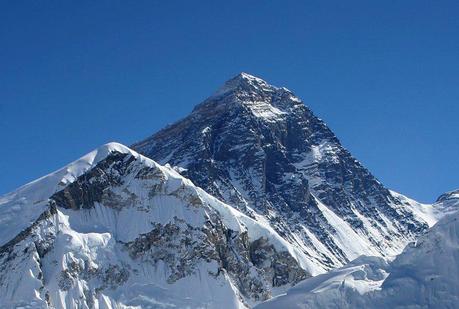
As I mentioned a few days back, the Everest 2011 season isn't as far off as you would think, and as I write this, dozens of mountaineers across the globe are preparing to head to the Himalaya in a month to start their epic climb up the world's tallest mountain. While there are more challenging and hazardous peaks to scale, Everest is the one that holds the attention of the mainstream audience for sure. As most of you know, the bulk of the summit attempts come along two routes, one from the North Side, which falls inside Tibet, and one from the South Side in Nepal. Despite the fact that the two routes are on the same mountain, they both vary a great deal from one another. Fortunately, Alan Arnette has written an excellent, and informative, blog post to help us sort out the various routes up Everest.
The article breaks down both the North and South Side routes, explaining where each of the camps are located and sharing the distances traveled and the time it takes, on average, to reach those points on the mountain. He also shares the more famous landmarks on the climb as well, such as the Balcony and the Hillary Step, both of which are found along the South Side route. Those points of reference are often used when explaining where teams are at on the mountain, especially on summit day when they are making their final push. If you're new to following the Everest season, this information will help you put everything into perspective when the action begins later this spring.
Alan also shares the positive and negative aspects of climbing from either side as well. For instance, on the North Side you can actually drive to Base Camp and you'll find smaller crowds on the way to the top, but you'll also have to deal with colder temperatures and higher winds as well. Meanwhile, the South Side has nearby villages for acclimatizing and recovery and tends to be slightly warmer, but climbers have to pass through the dreaded Khumbu Icefall every time they leave BC.
Finally, Alan wraps things up with a discussion on which side of the mountain is the most deadly. Statistically speaking, the North earns this dubious distinction, and he explains some of the reasons why that might be, such as lower costs leading to more independent climbers, more technically challenging aspects to the climb, and so on.
This article is an excellent primer for those looking to learn more about what goes into an Everest climb and how the various routes differ from one another. It is also a nice reminder for those of us who have been following the annual spring climb for some years too, and it helps to prepare us for the season ahead.
Alan will actually be on Everest for the fourth time this spring as he continues his Seven Summit Climbs for Alzheimer's. This will be the third of his seven summits, having already knocked off Vinson in Antarctica and Aconcagua in Argentina.

